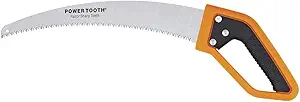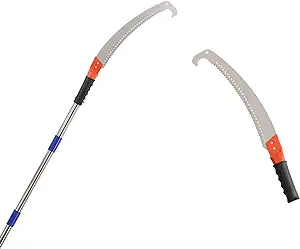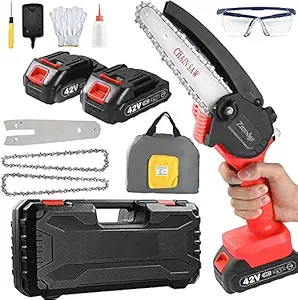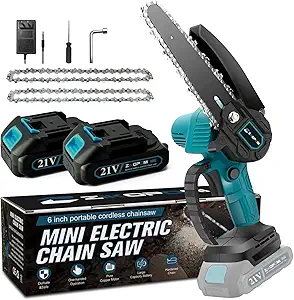The Ultimate Buying Guide for Pruning Saws for Tree Trimming
Overview
When it comes to tree trimming, having the right tools is essential. A pruning saw is a must-have tool for cutting branches and keeping your trees healthy. But with so many types and features available, it can be overwhelming to choose the best pruning saw for your needs. In this guide, we'll walk you through everything you need to know to make an informed decision.
Types
1. Hand Saw - A hand saw is a traditional pruning saw that is great for cutting smaller branches. They are lightweight and easy to maneuver, making them ideal for smaller trees and shrubs.
2. Pole Saw - A pole saw is a pruning saw that has a long handle, allowing you to reach higher branches without having to climb a ladder. They are great for larger trees and can help you safely trim branches without risking injury.
3. Curved Blade Saw - A curved blade saw is designed to help you cut branches quickly and easily. The curved blade makes it easier to get through tough, thick branches, and the teeth are designed to prevent the saw from getting stuck.
4. Straight Blade Saw - A straight blade saw is a versatile pruning saw that can be used for a variety of tasks. They are great for cutting smaller branches and can be used for both pruning and general landscaping tasks.
5. Folding Saw - A folding saw is a compact pruning saw that is great for on-the-go use. They are lightweight and easy to carry, making them ideal for camping trips or other outdoor activities.
Key Considerations
1. Blade Length - The length of the blade is an important factor to consider when choosing a pruning saw. Longer blades are better for cutting larger branches, while shorter blades are ideal for smaller branches.
2. Teeth Per Inch - The teeth per inch (TPI) of a pruning saw is another important consideration. A higher TPI means the saw will cut more smoothly, but may take longer to cut through thicker branches.
3. Cutting Capacity - The cutting capacity of a pruning saw is the maximum thickness of branch it can cut. Make sure to choose a saw with a cutting capacity that is appropriate for the trees you will be trimming.
4. Ergonomic Handle - An ergonomic handle is important for reducing fatigue and making it easier to use the saw for extended periods of time. Look for a handle that is comfortable to grip and has a non-slip surface.
5. Lightweight and Durable - A lightweight and durable pruning saw is essential for ease of use and longevity. Look for a saw that is made from high-quality materials and is designed to withstand heavy use.
Features
1. Rust-Resistant - A rust-resistant pruning saw is important for longevity and to prevent the blade from becoming dull over time.
2. Replaceable Blade - A pruning saw with a replaceable blade is a great investment, as it allows you to replace the blade when it becomes dull or damaged.
3. Safety Features - Look for a pruning saw with safety features such as a blade lock or sheath to prevent accidental injury.
Prices
Pruning saws can range in price from around $10 for a basic hand saw to over $100 for a high-end pole saw. The price you pay will depend on the type of saw and the features it includes.
Tips
1. Always wear protective gear, including gloves and eye protection, when using a pruning saw.
2. Make sure to keep the blade clean and sharp to ensure optimal performance.
3. Use the right type of pruning saw for the job to prevent injury and ensure the best results.
FAQs
Q: Can I use a pruning saw to cut down a tree?
A: No, a pruning saw is designed for cutting branches and should not be used to cut down a tree.
Q: How often should I sharpen my pruning saw?
A: It is recommended to sharpen your pruning saw after every use to ensure optimal performance.
Q: Can I use a pruning saw to cut through metal?
A: No, a pruning saw is not designed to cut through metal and should only be used for cutting branches.
Conclusion:
Choosing the right pruning saw for tree trimming is essential for keeping your trees healthy and looking their best. With this guide, you now have all the information you need to make an informed decision. Consider the type of saw, key considerations, features, and prices to find the perfect pruning saw for your needs. Remember to always use protective gear and follow safety guidelines when using a pruning saw.













